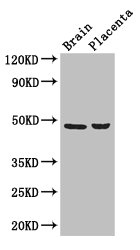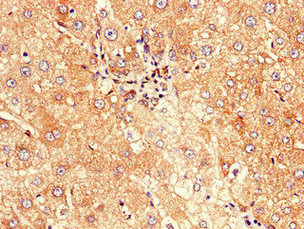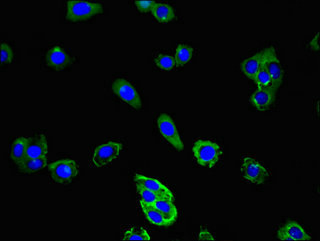The recombinant human CD177 antigen protein (22-321aa) was introduced into the rabbit, inducing an immune response that generates the CD177 polyclonal antibody. After collecting the rabbit's blood, the serum containing the CD177 polyclonal antibodies was purified using protein G affinity chromatography, yielding a high-purity product (purity >95%), which ensures the reliability and accuracy of the results.
This CD177 antibody exhibits reactivity with both human and mouse samples and has been validated for use in various applications, including ELISA, WB, IHC, and IF. These applications allow for the detection of CD177 protein presence and quantity, visualization of its distribution and localization, as well as its identification.







